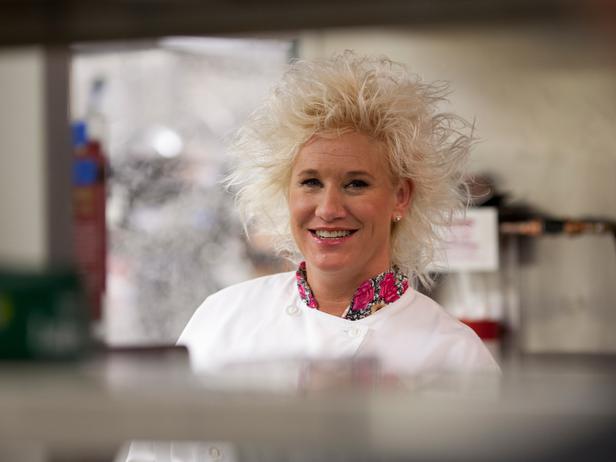
In my last article I talked about the importance of cooking skills 101 and how Chef de Cuisine Joey Delago explains each task along with its associated skill. I discussed the task-centred categories of cooking skills and their applications, including Activating yeast and making stocks. These skills are essential for every cook. A list can help you choose which ones to learn and which to ignore. This article will cover some of these skills before you move on to the next level in your culinary journey.
Chef de Cuisine Joey DeLago's cooking skills 101 class
Chef de Cuisine Joey DeLago's cooking skills 101 class is for you if you ever wanted to be a professional chef. This hands-on class focuses on the basic culinary skills you need to make a multi-course meal in a pinch. Joey will be sharing tips and tricks about planning, timing, presentation, prepping, and timing. You can also share your final meal with other home chefs.
Categories of cooking skills that are task-based
The Food Agency defines cooking abilities as the combination of knowledge, skills, practices, and techniques that support a healthy diet. This framework recognizes many barriers to healthy diets lie in the environment. But it focuses primarily on encouraging food skills through the implementation of appropriate measures. These measures should be easy-to-understand, can relate to other domains, be applicable across many sociodemographic levels. The following four categories address some of the most urgent issues related to food skill.

Activating yeast
If you use yeast in your cooking, you'll need to know how to activate it. To activate yeast, warm some tap water and run some hot water through it. Sometimes, you might need to add sugar or water. Here are some tips that will help activate your yeast. It's ready to use once the yeast has reached a bubbly stage. Baking success is dependent on activating yeast.
Stockpiling
Using a stock can make your dinners more flavorful and add a lot of depth to a dish. Stocks can be made from vegetables, meat, or fish and can also have Western or Asian origins. You can use bottled water to make your own stock, but you may want to try using filtered water found at the supermarket. There are many stock recipes, so it is important that you follow some basic guidelines in order to make your stock as flavorful as possible.
Making whipped cream
Whipped cream is an excellent way to finish off a cake or dessert. This classic dessert is simple to make but you need to be careful. It's not ice cream. Instead of a sloppy consistency, whipped cream should be a fluffy, slightly curved peak that sticks to the whisk and doesn't dissolve right away. Soft peaks can also be made by beating the cream using a spoon until the cream holds its shape.

Melting chocolate
Learning how to melt the chocolate is a must-have skill if you want to create amazing desserts. This is a complex task. We have some tips that will help you speed up the process and make sure it's done correctly. You must first know the right technique. There are two ways to melt chocolate: double boiler method and the microwave method. Double boiler method involves using a heatproof bowl or pan with a glass or stainless steel bottom nestled over a saucepan of simmering water. You should not allow the water to splash into this bowl and should only use it slowly.
FAQ
What does a culinary program cost?
Costs for culinary school vary depending on where you live, how long you study and which program you choose. The average tuition ranges from $10,000-$30,000 per year. Students graduate with approximately $20,000 of debt. There are programs that offer work-study and scholarships.
Can I learn to cook with my kids?
Yes! Yes! It's fun and teaches kids responsibility as well as teamwork. Children can help in everything, from washing vegetables and cutting onions. You will have your children enjoy helping you cook as long as they follow safe procedures when using knives.
How do I learn about cooking and baking?
You can find cooking classes all across the country. Many schools offer courses on baking, pastry, or wine tasting. If you want to learn more about cooking, you can enroll in a class at a local community college or vocational school, or attend one offered by a private institution.
How can I be hired as a chef?
You can get a job as a cook through word of mouth. A friend or family member might know of an open restaurant that is in desperate need of staff. Restaurants often post openings on websites and bulletin boards.
Where can I buy good quality kitchen equipment?
You can purchase high-quality kitchen equipment online. There are many websites where you can shop for all kitchen tools. Be sure to read customer reviews before you buy any kitchen equipment. Ask others who have used similar items if you would like to recommend them.
Is there any special equipment that is required to cook?
Cooking doesn't require special equipment. However, having the right tools can make cooking easier. For example, a knife could be used for pasta making or a whisk would be better than a hand mixer for whipping egg whites to stiff peaks. It makes cooking much easier and quicker.
How do I become a Chef?
There are many paths to becoming a chef. You can begin by taking a course at a community college or vocational school. Then, look into attending culinary school. Finally, consider a paid internship.
Statistics
- In the United States, the category is estimated at $23.2 billion annually and is growing faster than the market. (washingtonpost.com)
- On average, chefs earn $58,740 a year, according to the BLS. - learnhowtobecome.org
- You'll be amazed that over 90% of CIA students receive scholarships and grants to finish their culinary studies. (ischoolconnect.com)
External Links
How To
How to make the perfect omelet
Omelets are my favorite breakfast dish. How do you make them perfect? I've tried many recipes and different methods but none have worked. So I am sharing some tips and tricks today to help you make fluffy, delicious omelets every morning.
Before we start making omelets, let's remember that eggs are temperamental. Eggs must be purchased fresh, preferably organic, and kept chilled until ready for cooking. They must be kept cool, otherwise the whites will not form properly and the yolks may become runny. This causes your omelets to look oddly colored. If you plan to cook the eggs right away, it is best to use room temperature eggs.
Another tip is to separate your egg before adding it into the pan. Because this could cause your omelet to become curdled, you don't want any yolk to be mixed with any white.
You could end up burning the bottom half of the egg if the egg is added directly to the heat source. Instead, microwave the egg for 10 seconds before adding it to the pan. The microwave heat cooks your egg just right, without it becoming too soft.
Next, let's discuss mixing the eggs. When mixing eggs, it is important to thoroughly beat them. To do this, grab the bowl of the mixer and turn it upside down. Now shake the bowl vigorously. The egg will be thoroughly mixed in the bowl as the air is whipped.
The fun part is now - adding the milk to the mixture. Mix half of the milk with the eggs. Then fold the eggs in half into the remaining milk. Do not worry if you see streaks of egg; they will disappear when the omelet is flipped.
After folding the eggs, place the pan on medium heat and wait for the oil to start sizzling. Once the oil starts getting hot, add 1/4 cup of butter to the pan and swirl it around to coat the entire surface of the pan. Next, carefully open the lid and sprinkle salt into your pan. An additional pinch of salt will prevent the omelet form sticking to your pan.
Cover the pan once you have formed the omelet. Wait for the top to set. Flip the omelet by using a spatula. Cook the opposite side for another minute. Remove the omelet from the pan and serve immediately.
This recipe works best with whole milk, but skimmed milk also works.